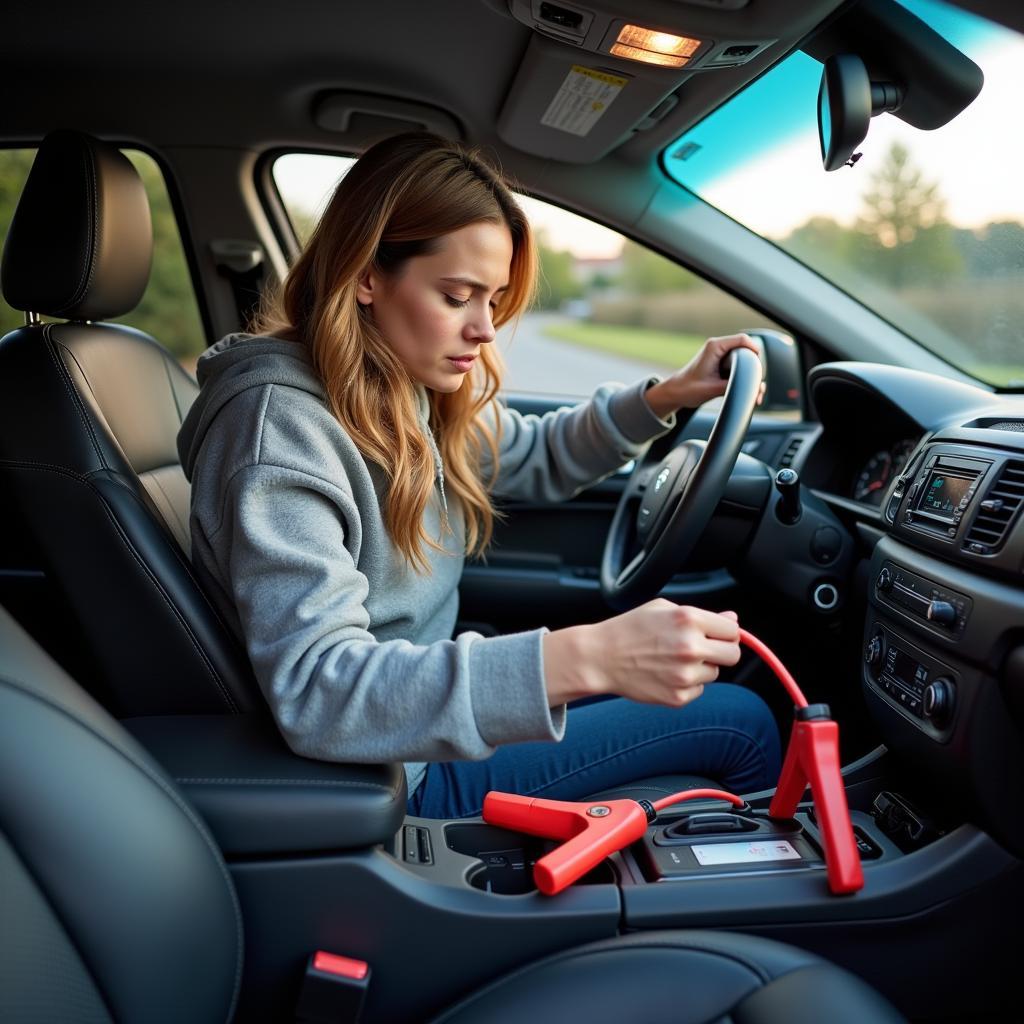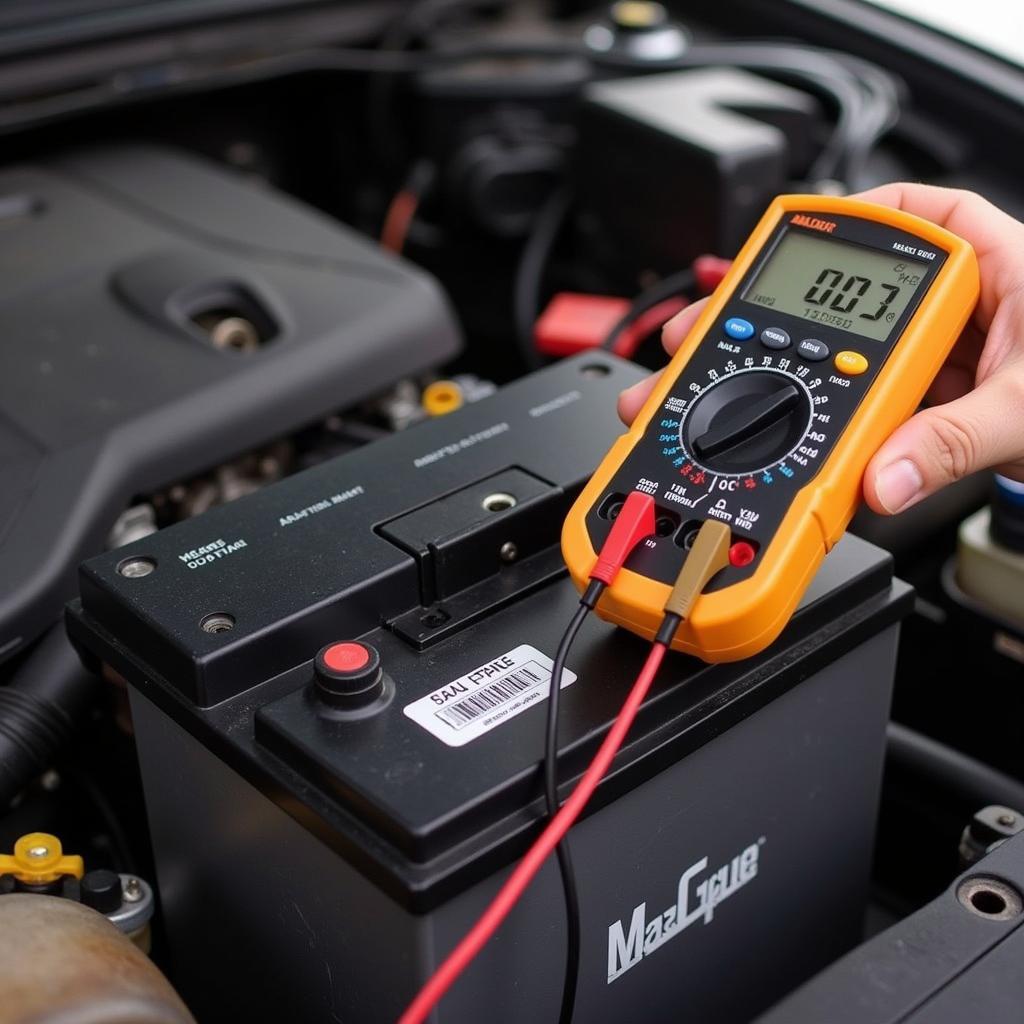Experiencing a dead battery is frustrating, and sometimes, even after a jump start, your car might refuse to cooperate. This can be incredibly annoying, but understanding the potential reasons why your car not working after jump start and knowing how to troubleshoot the issue can save you time, money, and a lot of headaches.
 Car not starting after jump start: A frustrated driver trying to start their vehicle.
Car not starting after jump start: A frustrated driver trying to start their vehicle.
Why Won’t My Car Start After a Jump?
Several factors can contribute to a car not starting even after receiving a jump start. A failing alternator is a common culprit. Its job is to recharge the battery while the engine is running. If it’s not working correctly, the battery won’t receive the necessary charge, leaving you stranded even after a jump. A faulty starter motor can also be the issue. The starter is responsible for cranking the engine. If it’s damaged or worn out, the engine won’t turn over, regardless of whether the battery is charged. Sometimes, the problem isn’t with the car’s electrical system at all. Bad connections, corroded battery terminals, or even a faulty ignition switch can prevent the car from starting. Lastly, and perhaps less commonly, deeper electrical problems within the car’s system can cause starting issues even after a jump.
If you are interested in upgrading your car’s audio system for better connectivity, consider checking out options for a single din car radio bluetooth.
Troubleshooting a Car That Won’t Start After Jump Starting
When your car not working after jump start, systematic troubleshooting is key. First, double-check the battery connections. Make sure the cables are securely attached to the correct terminals. Loose or corroded connections can prevent the current from flowing properly. Next, inspect the battery terminals for corrosion. Clean them with a wire brush or baking soda solution if necessary. Then, test the alternator using a multimeter. A reading of around 14 volts indicates a healthy alternator. A significantly lower reading suggests a problem. If the alternator is fine, move on to checking the starter. A clicking sound when turning the key might indicate a faulty starter. Finally, if all else fails, consider checking the ignition switch and other electrical components, or seeking professional help.
“A common mistake people make is assuming the battery is the sole problem,” says automotive electrical expert, David Miller. “Often, it’s a symptom of a larger issue, like a faulty alternator. Proper diagnostics are essential.”
How to Test Your Car’s Alternator
Testing the alternator is a relatively straightforward process using a multimeter. First, start the car and let it idle. Then, connect the multimeter’s red lead to the positive battery terminal and the black lead to the negative terminal. With the engine running, the multimeter should read between 13.5 and 14.5 volts. A reading significantly outside this range indicates a problem with the alternator.
Upgrading a classic car with modern technology can be rewarding. Learn how to make vintage car radios bluetooth ready for a seamless audio experience.
How to Check Your Car’s Starter
Checking the starter often requires listening for specific sounds. When you turn the key, a clicking sound usually indicates a faulty starter solenoid or a weak battery. A grinding noise could mean a damaged starter gear. If you hear nothing at all, the starter motor itself might be the culprit.
What Should I Do if My Car Still Won’t Start?
If your car not working after jump start and you’ve exhausted the basic troubleshooting steps, it’s time to seek professional help. A qualified mechanic can perform more in-depth diagnostics to pinpoint the issue and recommend the necessary repairs. They have the tools and expertise to diagnose complex electrical problems and ensure your car is back on the road safely.
“Ignoring persistent starting problems can lead to more significant and costly repairs down the line,” cautions Sarah Chen, a certified automotive technician. “Addressing the issue promptly can save you time and money in the long run.”
Conclusion
A car not working after jump start can be a sign of various underlying issues, from a simple loose connection to a more serious problem with the alternator or starter. By following these troubleshooting tips and seeking professional help when necessary, you can effectively address the problem and get your car running smoothly again. Remember, timely diagnosis and repair are crucial to prevent further damage and ensure your safety on the road. Don’t delay getting your car checked if you experience this problem.
If you’ve recently had an oil change and are experiencing starting issues, check out this helpful resource: car wont start oil change. For those looking to streamline their in-car audio experience, explore how to set up Bluetooth with various car radio brands such as pioneer car radio bluetooth setup or how to kenwood car radio listen to phone music bluetooth.


